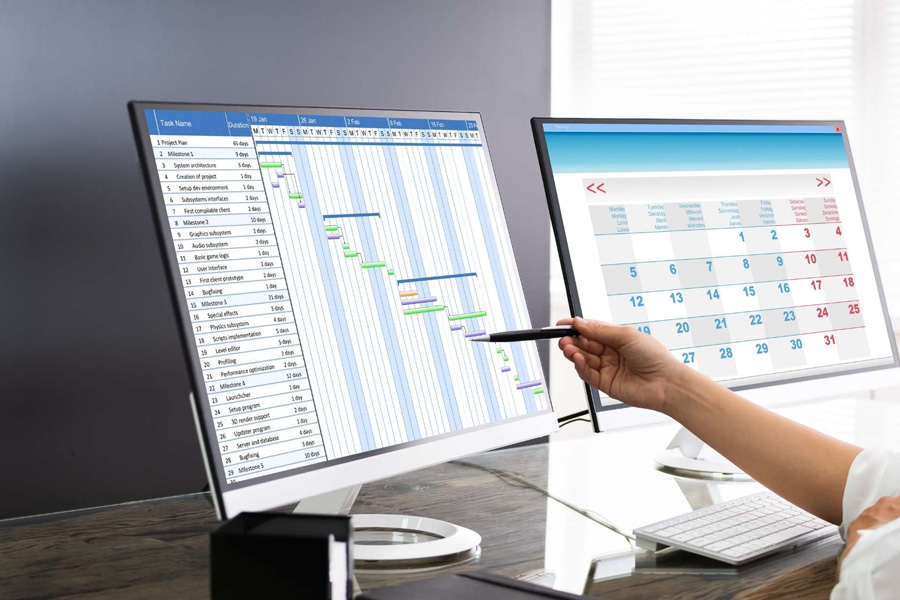In the wake of the COVID-19 pandemic, remote work has evolved from a temporary measure to a permanent fixture for many businesses. As companies embrace the flexibility of work-at-home arrangements, effective management tactics become crucial for maintaining productivity and ensuring a positive work experience for employees. Here’s a guide to the top management tactics to support work-at-home productivity.
Management Tactics to Support Work-at-Home Productivity
1. Establish Clear Communication Channels
Effective communication is the backbone of successful remote work. Managers should implement robust communication tools and platforms to ensure that team members can easily collaborate and stay connected. Tools like Slack, Microsoft Teams, or Zoom facilitate real-time discussions and virtual meetings, while project management software like Asana or Trello helps track progress and manage tasks.
Encourage regular check-ins and updates. Daily or weekly team meetings can keep everyone aligned on goals and deadlines. Be sure to set clear expectations for communication frequency and response times to avoid misunderstandings and ensure that all team members are on the same page.
2. Set Clear Goals and Expectations
Without the structure of an office environment, it’s essential to set clear goals and expectations for remote employees by situational analysis. Outline specific objectives, deadlines, and performance metrics to provide direction and motivation. Use SMART criteria—Specific, Measurable, Achievable, Relevant, and Time-bound—to ensure that goals are well-defined and attainable.
Regularly review and adjust these goals as needed. Providing feedback and recognizing achievements helps keep employees engaged and motivated. Acknowledging progress not only boosts morale but also reinforces the importance of meeting targets and maintaining high performance.You can utilize an employee productivity monitoring software like Controlio.
3. Foster a Culture of Trust and Autonomy
Remote work relies heavily on trust. Managers must resist the urge to micromanage and instead foster a culture of autonomy. Trust your employees to manage their time and deliver quality work without constant supervision. Empowering employees to make decisions and take ownership of their tasks enhances their sense of responsibility and job satisfaction.
To build trust, focus on results rather than process. Measure productivity by the outcomes achieved rather than the hours spent online. This approach encourages employees to work efficiently and creatively, rather than just logging time.
4. Provide the Right Tools and Resources
Equipping employees with the right tools and resources is crucial for remote work productivity. Ensure that team members have access to necessary software, hardware, and reliable internet connections. Invest in ergonomic office furniture or provide stipends for home office setups to enhance comfort and productivity.
Offer training and support for using these tools effectively. Employees should be familiar with collaboration platforms, cybersecurity practices, and any other technologies that are part of their daily work routine. Providing ongoing technical support helps prevent disruptions and keeps work flowing smoothly.
5. Promote Work-Life Balance
Remote work can blur the boundaries between personal and professional life, leading to burnout and decreased productivity. Encourage employees to establish a clear separation between work and home life. Promote practices like setting regular work hours, taking breaks, and creating a dedicated workspace.
Lead by example. Managers should also practice work-life balance and model healthy work habits. Show that taking time off and disconnecting from work is acceptable and encouraged. By prioritizing well-being, you help employees stay refreshed and productive.
6. Monitor Performance and Offer Support
Regularly assess employee performance through one-on-one meetings, performance reviews, and feedback sessions. Use these opportunities to discuss any challenges employees may be facing and offer support or resources to address them. Be proactive in identifying and resolving issues that could impact productivity.
Implement tools and metrics to track progress and performance objectively. Avoid relying solely on time-based measures; instead, focus on output and achievement of goals. This approach provides a more accurate picture of productivity and helps in identifying areas for improvement.
Supporting work-at-home productivity requires a combination of clear communication, goal-setting, trust, and support. By implementing these management tactics, businesses can create a productive and positive remote work environment. With the right approach, remote work can be as effective and rewarding as any traditional office setting.



